Pay Per Click(PPC) Marketting

Pay Per Click(PPC) Marketting
Pay Per Click (PPC) marketing is a digital advertising model in which advertisers pay a fee each time one of their ads is clicked. It’s a way of buying visits to a website rather than earning them organically through methods like Search Engine Optimization (SEO). PPC is commonly associated with search engines, but it can also be used on social media platforms and other websites.
Here are key aspects of PPC marketing:
- Search Engine Advertising:
- In the context of search engines, advertisers bid on keywords relevant to their target audience. When users search for these keywords, the ads appear at the top or bottom of the search engine results page (SERP). Google Ads is the most popular PPC advertising platform for search engines.
- Ad Auctions and Bidding:
- Advertisers participate in ad auctions, where they bid on keywords. The bid amount, along with the ad’s quality score (based on relevance and other factors), determines ad placement. The highest bidder with the best quality score often gets the top position.
- Keywords and Targeting:
- Keywords are fundamental to PPC campaigns. Advertisers select relevant keywords to target their ads to specific audiences. Negative keywords can also be specified to avoid irrelevant clicks.
- Ad Copy and Creatives:
- Compelling ad copy and visuals are essential for attracting clicks. Advertisers need to create engaging headlines, concise descriptions, and relevant calls-to-action. Well-designed display or video creatives can enhance the effectiveness of ads on various platforms.
- Landing Pages:
- Ads direct users to specific landing pages on the advertiser’s website. Landing pages should be optimized for conversions, providing a seamless and relevant experience based on the user’s search intent.
- Ad Formats:
- PPC advertising comes in various formats, including text ads, display ads, video ads, and shopping ads. The choice of format depends on the campaign goals and the platform being used.
- Budgeting and Cost Control:
- Advertisers set a daily or monthly budget to control costs. PPC platforms often provide tools for bid adjustments, scheduling, and targeting options to optimize spending.
- Campaign Tracking and Analytics:
- Monitoring and analyzing campaign performance are crucial for optimizing PPC efforts. Metrics such as click-through rate (CTR), conversion rate, cost per click (CPC), and return on ad spend (ROAS) help assess the effectiveness of campaigns.
- Remarketing:
- Remarketing involves showing ads to users who have previously visited a website. It’s a way to re-engage potential customers and encourage them to complete desired actions, such as making a purchase.
- Social Media Advertising:
- In addition to search engines, PPC is widely used on social media platforms like Facebook, Instagram, Twitter, and LinkedIn. Advertisers can target specific demographics, interests, and behaviors.
- Geo-Targeting:
- PPC platforms often allow advertisers to target specific geographical locations. This is beneficial for businesses that want to reach a local or regional audience.
- Continuous Optimization:
- PPC campaigns require ongoing optimization. This includes refining keyword lists, testing ad copy, adjusting bids, and staying updated on industry trends and changes in search engine algorithms.
- Ad Quality and Relevance:
- Search engines prioritize ads with high relevance to user queries. Advertisers are encouraged to create high-quality, relevant ads to improve their ad rank and reduce costs.
- Competitive Analysis:
- Understanding competitor strategies can provide valuable insights. Analyzing competitor ads, keywords, and landing pages can help refine your own PPC strategy.
